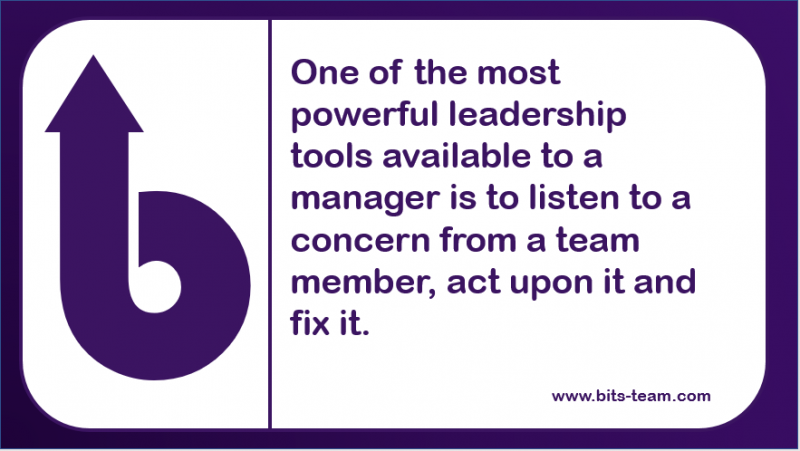One of the most powerful leadership tools available to a manager is to listen to a concern from a team member, act upon it and fix it.
When looking to implement a behavioural safety program or introduce new initiatives around behavioural safety, I have often heard managers say things like, ‘this is too sophisticated for our guys, they won’t understand the complexities of behavioural science’. Though this seems to be a common reaction, it is an unnecessary concern. Firstly, your team probably have a more sophisticated understanding of human behaviour than you think. Secondly, they don’t need to understand complex theories and behavioural models. The key to a successful behavioural safety program is great leadership which encourages bottom up development of the program.
If a leader sets out on a new initiative with a negative vision of the outcome, then the wider team are hardly likely to rise to the challenge. However, if you are trying to win your team over and get them engaged with a new initiative, your leadership power is a useful tool in gaining their support. Everyone wants to work in a safe environment. The only reason that your team might resist a behavioural safety program is that they a.) are not convinced of the potential results, and b.)perceive it will be more work for them. This is understandable, if it is something new why would you have immediate faith in the success of the idea? As a leader it is so easy for you to undo this concern. As a manager you have control of resources, you have decision making capabilities. Therefore, in the context of your behavioural safety program you can go out on site with your team and listen to their concerns. Then, in real time, pick up one of these concerns and act upon it. Get back to your desk and start wheels in motion and visibly deliver the solution. This way have you increased your authenticity, you have done as you said you would. You have also directly addressed the potential resistance from your team. You have demonstrated that the idea works, here we see a tangible improvement as a result of this new program. Secondly, you have done this yourself, without increasing the workload of the team.
In reality there will be work for your team, this is obvious. Through efficiencies and time saved through accident reduction, this can all be managed. However, the key is to win your team over to the idea of behavioural safety, and as a leader, this is so easy to do.

This isn’t a management trick, you aren’t conning your team into joining the party, you are demonstrating the effectiveness of the program in a very tangible way. As a result of a simple act, you are now recognised by the team as the person who sorted that problem. Furthermore this positive memory is in the context of the new behavioural program.
Here are a few pointers as to what a leader can do to help achieve success in launching a behavioural safety program.
- Turn up – attend meetings and events associated with the program. If you are not leading the sessions, be an active participant and encourage input from others.
- Quick wins – listen to concerns of the team, pick a genuine concern and act upon it.
- Get it done – when acting upon a concern, make it happen but don’t do it yourself (unless it is normally part of your role). You don’t want to create work for the team, however, if you try and show your commitment by doing the job yourself you might send out the wrong message. The manager rolling up their sleeves and unblocking a drain to return a defective toilet to service may seem like a gallant gesture. However, your team may read this as you setting your expectation of the team. They may assume that the new initiative is simply a way of getting them to do menial tasks to save money. Your ultimate aim is for the team to take ownership of improvements. The ideal culture is where the team manage the solutions and resource them appropriately.
- Start with positive recognition – you and your team will be learning as the program grows. Reward positive participation from the outset, even if the input isn’t quite in line with the vision. Positive recognition followed by constructive feedback is far better than the feedback alone, especially when onboarding your team members.
- Big up the team – promote the achievements of your team and your early quick wins around the organisation. Submit articles for your newsletter or website, use your electronic message board or equivalent to call out your team’s successes.
- Cross pollinate – where ideas from your site will help another location, share them and allow your team to help implement them. This provides a huge esteem boost for your team members.
- Make it core – if safety is one of your core values, make sure that your safety programs run through the performance targets of your team.
There are a whole host of measures that will lead to the success of your behavioural safety program, these are just a few of the leadership tools you can use to encourage success. If you are ready to launch a behavioural safety program or are thinking of expanding your existing program, read around the pillars of success that provide a foundation to a solid program. Before you do anything, get your role in the success of the program firmly established in your mind. Then, as always, visualise success and enjoy the journey!
